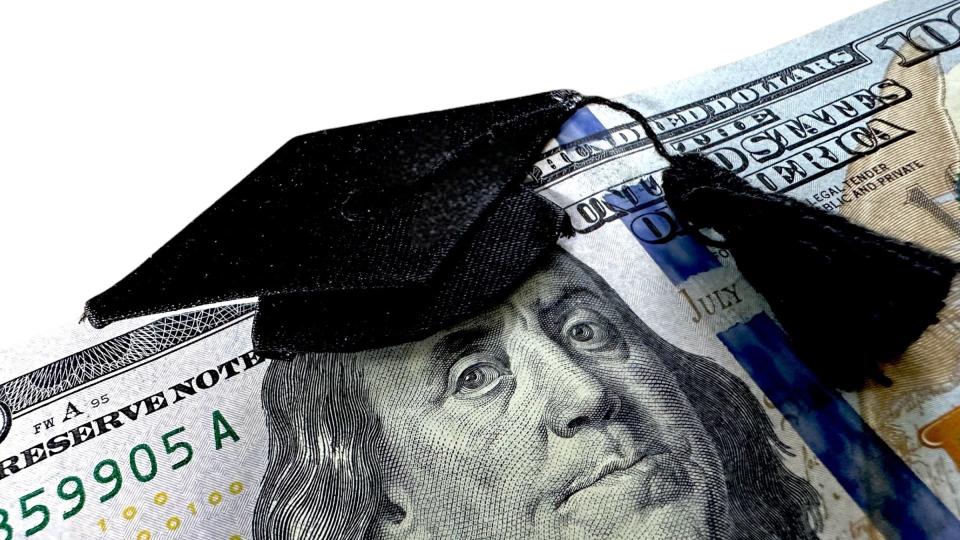While President Joe Biden’s initial efforts to enact debt forgiveness legislation were quashed by debt-ceiling plans and Supreme Court lawsuits, the administration went to work on alternatives. These alternatives include an income-driven repayment (IDR) strategy created to cut many borrowers’ monthly payments to $0 (the Saving on a Valuable Education [SAVE] plan), and a narrower forgiveness policy proposed for spring 2024.
Related: 5 Things the Middle Class Can’t Afford Anymore
Read: 3 Things You Must Do When Your Savings Reach $50,000
To date, the loan forgiveness approved by the Biden-Harris government totals $136.6 billion in aid for 3.7 million American borrowers, according to the U.S. Department of Education (ED).Relate
“This president has done more, especially for the most vulnerable student borrower populations, than any other administration I’ve ever seen,” said Betsy Mayotte, President and Founder of The Institute of Student Loan Advisors.
However, as Adam S. Minsky of Forbes notes, when three other debt relief programs expire this year, student loan borrowers are going to have to look elsewhere for alternate targeted-repayment initiatives, or seriously review their finances to accommodate monthly disbursements.
Sponsored: Owe the IRS $10K or more? Schedule a FREE consultation to see if you qualify for tax relief.
1. Income-Driven Repayment (IDR) Account Adjustments
To reflect borrowers’ payment counts more accurately, the Biden administration announced the Income-Driven Repayment (IDR) Account Adjustment (previously called the “IDR waiver”) in April 2022. The temporary adjustment allows eligible loan borrowers to use past periods of repayment (and even some periods of deferment and forbearance) toward their 20-year and 25-year IDR loan forgiveness terms and their Public Service Loan Forgiveness (PSLF) programs.
The recount has already been automatically adjusted for many federal loan borrowers, but if you hold a non-ED-administered commercial loan — a Federal Family Education Loan (FFEL), Perkins Loan or a Health Education Assistance Loan (HEAL), for example — you’ll need to consolidate your loan by way of a federal direct loan. The deadline to do this is April 30, 2024.
Additionally, the Education Department currently expects that the payment count adjustment will be completed by July 1, 2024, at which time the adjustment will be applied to those who have consolidated over to ED-managed loans. Because it takes at least 60 days to process a Direct Consolidation Loan application and to disburse the new loan, per the Federal Student Aid site, you’ll want to submit an application sooner than later.
2. Temporary Student Loan On-Ramp Repayment Program
To help the transition from the pandemic payment pause to restarting loan payments in October 2023, the Department of Education provided a temporary on-ramp from the beginning of that month to the end of September 2024. This was enacted to help prevent “the worst consequences of missed, late, or partial payments, including negative credit reporting for delinquent payments for twelve months,” according to the ED guidance on the StudentAid.gov site.
This on-ramp transition period ends on September 30, 2024, when borrowers will have to start repayment or enroll in an available relief plan like SAVE. During the on-ramp period, missed payments will automatically land you in loan forbearance (not delinquent), so you won’t get reported to the national credit reporting agencies or to a collection agency.
However, you’ll need to plan for repayment and the interest that has accrued for the entirety of the on-ramp period, which may mean higher monthly payments to your loan servicer. If you don’t need the on-ramp safety net, you’re better off making your monthly payments if you can now.
If you’re using this period to delay payments, make sure you have a contingency plan for the extra amount you’ll owe in September or hitch onto an affordable alternative repayment plan. Best to start planning now, either by stacking cash or researching repayment and forgiveness program enrollments.
3. Fresh Start to Get out of Default Program
Also originally announced in April 2022, the Fresh Start program allows borrowers who defaulted on their federal student loans prior to the payment pause to get them back into good standing. This status do-over will revert a borrower’s loan to “current,” negating all default reports and suspending collection efforts, per Forbes.
Learn: SNAP Benefit Maximums Have Increased — How Much More You’ll Receive Per Month in 2024
Aside from resolving student loan defaults, Fresh Start also allows borrowers to apply to new federal aid programs and provides a financial a “fresh start.” Enrollment must be completed before September 2024, so it would behoove you to apply immediately. You don’t want a paperwork delay at the deadline blocking you from debt relief and access to the program.
More From GOBankingRates
This article originally appeared on GOBankingRates.com: Student Loans: 3 Forgiveness Programs Are Going Away, Here’s What To Do Now For Financial Relief
Credit: Source link




